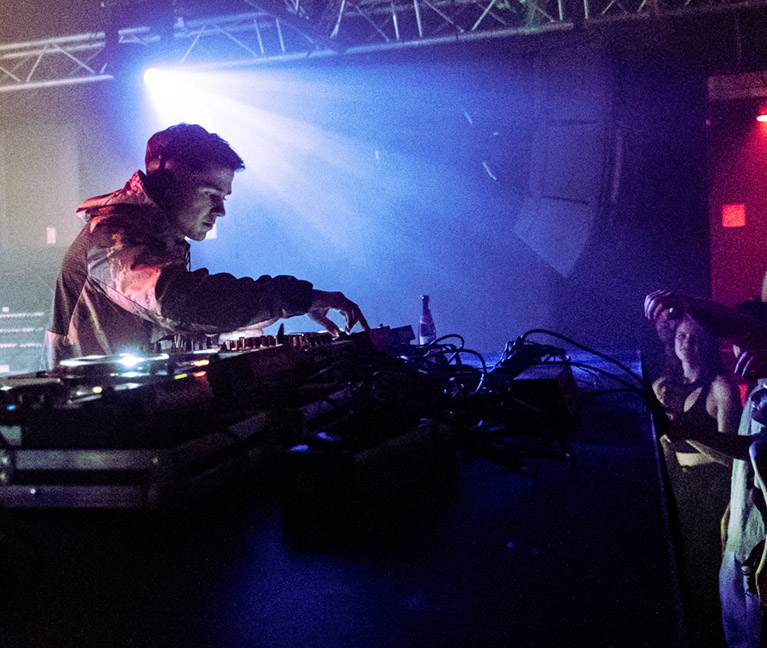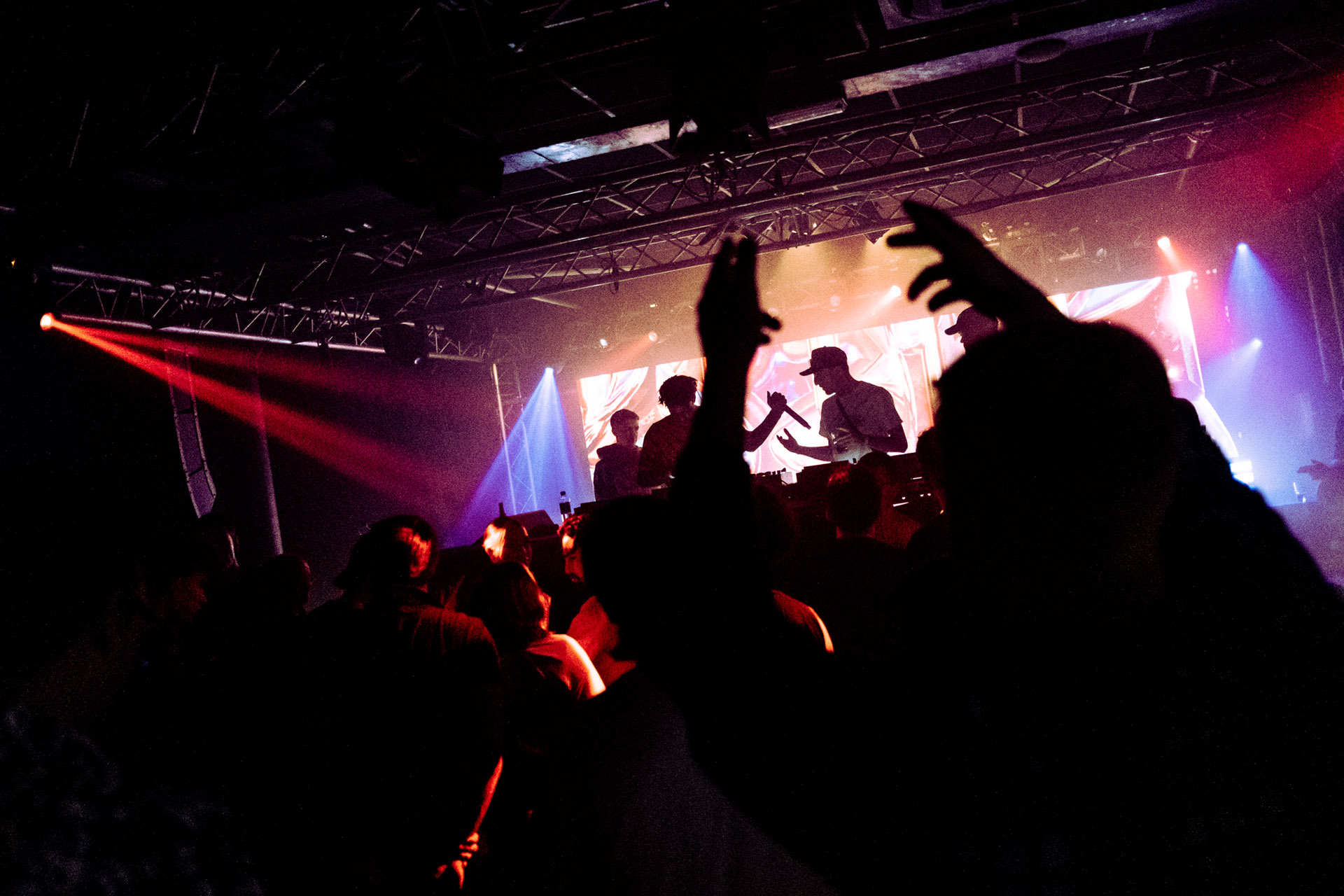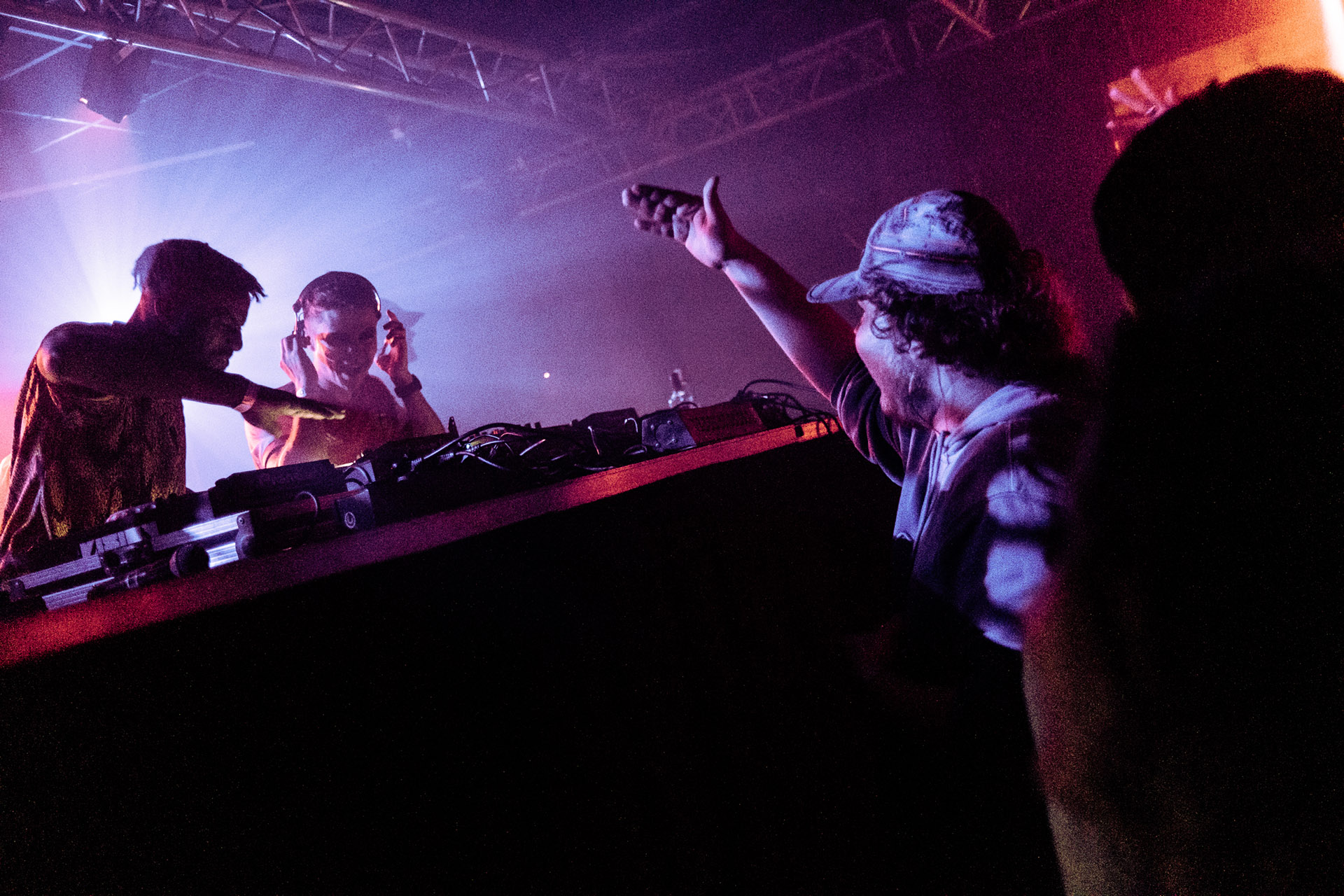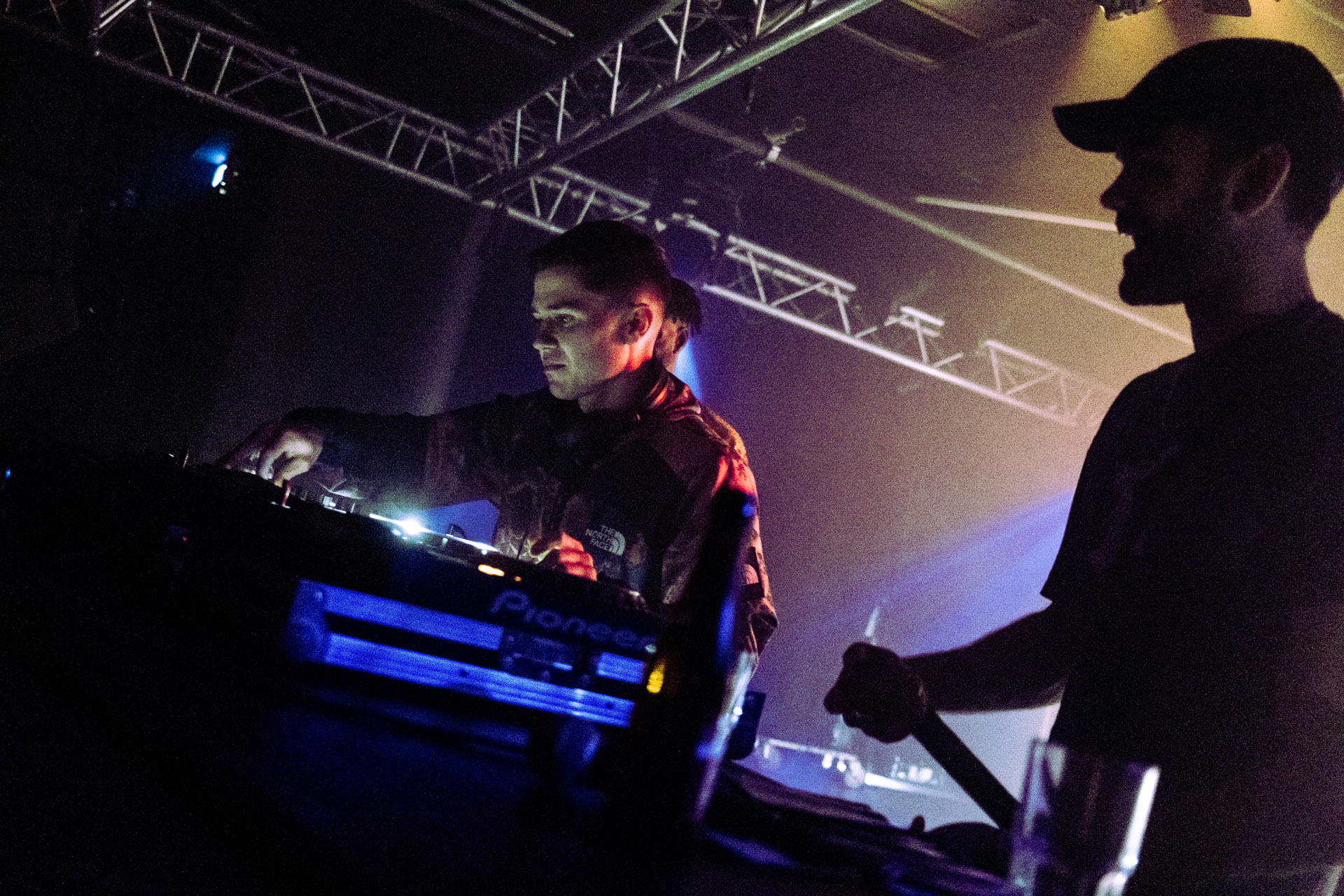
Musicologist and DJ studies raves
A life of grime
It’s 4.30 a.m. on a Sunday morning, but the dozens of people dancing under the coloured lights of Simplon to the fast-paced and bass-heavy music blasting from the speakers show no signs of fatigue.
Neither does the DJ on the stage. Alex de Lacey animates the crowd with his hand movements, his little dance breaks and nodding along to the beat.
There are typical ravers dressed in neon-green mesh shirts and matching headbands who dance in sharp movements to the powerful grime beats, but there are also people who look a little more out of place: students and academics in dress shirts.
That’s no coincidence, because the man up on stage is not just a DJ. De Lacey is also a researcher and he has invited them to this live illustration of his research into grime music to celebrate the launch of his book Level Up! Live Performance and Creative Practice in Grime Music.
Early 2000s
Grime is a relatively new electronic dance music genre. It originated in London in the early 2000s, shaped by Jamaican dancehall, reggae, US hip hop, and UK garage and jungle music.
Assistant professor of musicology de Lacey has been a fan of grime since its early days. ‘I was eleven when it gained traction’, he says. ‘On the school bus we would hold our phones together to exchange tunes via Infrared; pupils were rapping in the back of the bus.’
Having that insight into performance helps with my teaching and research
As a kid who had taken classical piano lessons from the age of four, he didn’t immediately appreciate the genre. That changed after a friend pointed out a grime piece he thought de Lacey would appreciate, because it had strings in it. ‘I absolutely loved it.’
Once it clicked, he never looked back. ‘I lived in this small, shit town an hour south of London. We were so connected to grime. We’d go up to shows when we could and it just became part of what we did.’

Energy
What drew him to grime – and still does – was the energy the music exudes. The quick track changes and multiple rappers vying for the microphone on stage fascinate him. He started DJing in 2009, later joining the grime collective Over The Edge. He’s had radio shows on various pirate radio stations, airtime on Kiss FM, and is booked regularly for raves across the UK with his friends from Over The Edge.
Those same friends joined him to celebrate his book: London grime MC Flowdan headed the line-up in Simplon and Noord Brabant-based DJ Tempest as well as East London MC Razor made appearances. De Lacey hopes that this mix of artists from the UK and the Netherlands might lead to exciting collaborations in the future.
It took some time before he was able to convince his colleagues in academia of grime’s worth as a research subject, though. ‘When I tried to do my PhD on it, I applied to an esteemed university. They told me that perhaps not much had been written about it yet because it was not academically interesting enough.’
Tension
Many researchers in the field would rather see him teach about Brahms, he says. ‘I know there’s people who hate my research. And I know there’s people who think it is a waste of time.’ This tension, he says, is always there when grime meets academia.
But that didn’t stop him from researching his passion project, and actively participating in it. To him, it does not make sense to theorise on grime music from the outside. ‘Having that insight into performance helps with my teaching and research, because I have such an embedded understanding of their lyrics, their rhythms, their references.’
Grime has been marginalised and criminalised unfairly
His research for the book didn’t involve him sitting behind a desk, either. ‘I just performed a lot.’ After those performances, often in the early morning hours, he’d spent a lot of time on London’s night buses, reflecting on his experiences and writing them up the next day. ‘If I tried to do it again now, I’d probably be too old and tired.’
He also visited four to five hundred events where other artists performed, but this didn’t really feel like research to him. ‘Seeing live performances is like nothing else. I’ve never seen anything that captures that for me.’

Highly complex
His research culminated in the release of his book, which explores the creative processes that guide grime performances. It tries to unpack what musicians do, how they do it and how we can understand the concept of improvisation by looking at grime music. ‘Take the way grime artists rely on subtle linguistic and musical cues to guide their improvised performances’, de Lacey explains. ‘Grime is distinctive in its highly complex nature.’
He really wanted to introduce that uniqueness to academia. ‘Grime has a difficult history, as it is an example of black British music’, de Lacey says. ‘It has been marginalised and criminalised unfairly.’
My students are not just learning about old white men
Take the London Metropolitan Police’s introduction of the so-called Form 696, a risk assessment form that paved the way for prohibiting certain music events to take place and that de Lacey saw utilised many times during performances. ‘The police would ask what music we were playing and what the expected demographic was. And then, they would just shut down the whole event because of what they called “safety concerns”. That is an implicit criminalisation of artists, which is really fucked up. That used to piss me off so much.’
Added value
This criminalisation of black voices heavily influenced his research and teaching at the UG. He actively introduces students to traditionally black forms of music, such as grime, Jamaican dancehall, or drill. ‘These types of music, which haven’t always been in the classroom, have added value for students. They’re not just learning about old white men, as is typical for academia.’
In his reading lists and teachings, de Lacey aims for a 50/50 gender balance and within that foregrounds black theorists and theorists of colour. ‘Academia can be elitist and I come from a not so elitist background. That’s always been a challenge, but you can still bring a richer and more diverse understanding to the students.’
As a white man himself, de Lacey is aware of his position within academia and grime as well. ‘White institutional structures see you as more permissible in those spaces, so it’s no surprise that the biggest DJs of the genre in the UK tend to be white, because of structural racism. I know that I kind of benefit from that too.’
And although he finds the space between being a DJ and an academic really challenging, he has no plans of giving up either of his passions. ‘It’s very hard, it’s always been hard. You work very long days, but you get used to it. I’m willing to make it happen.’
